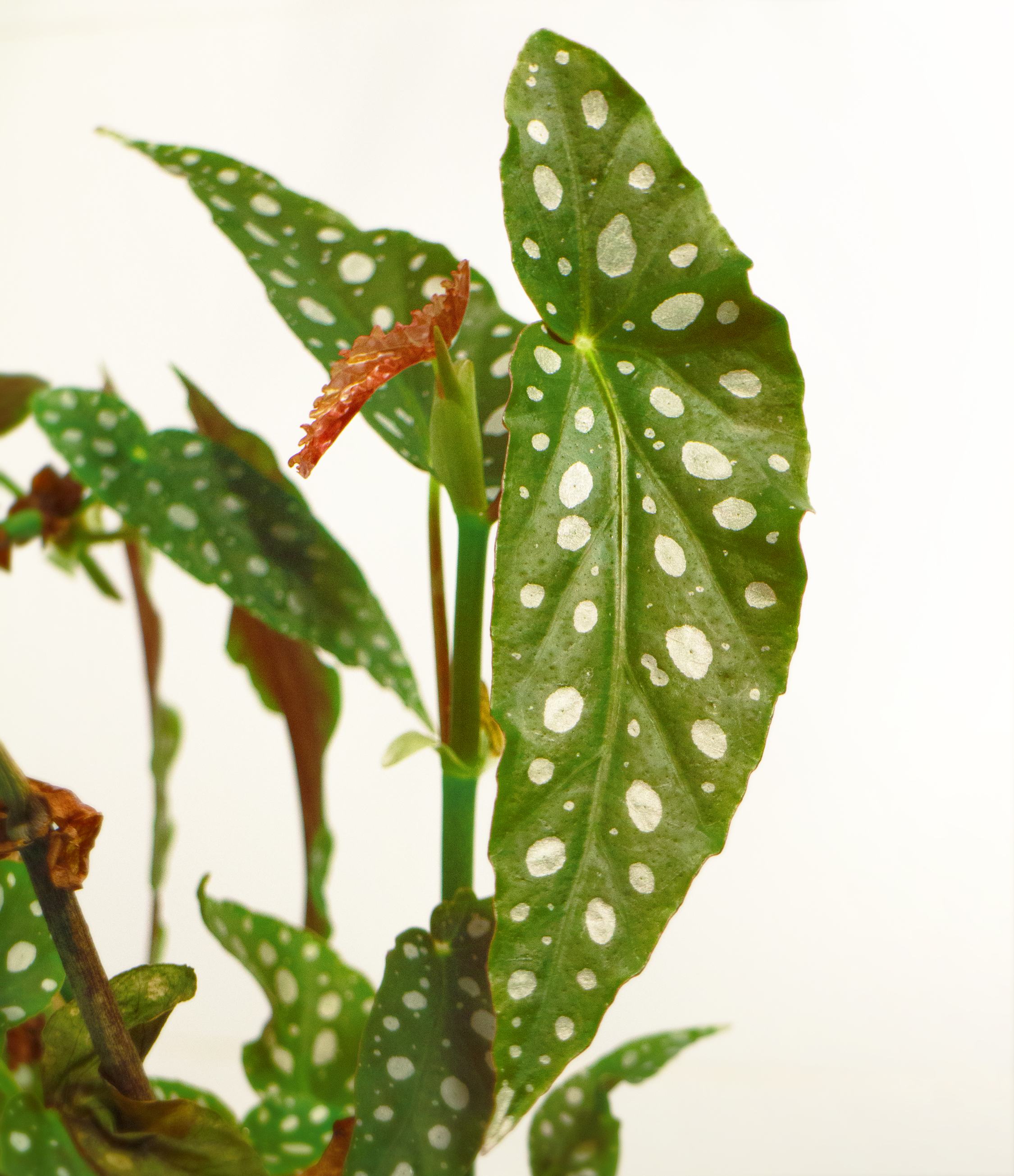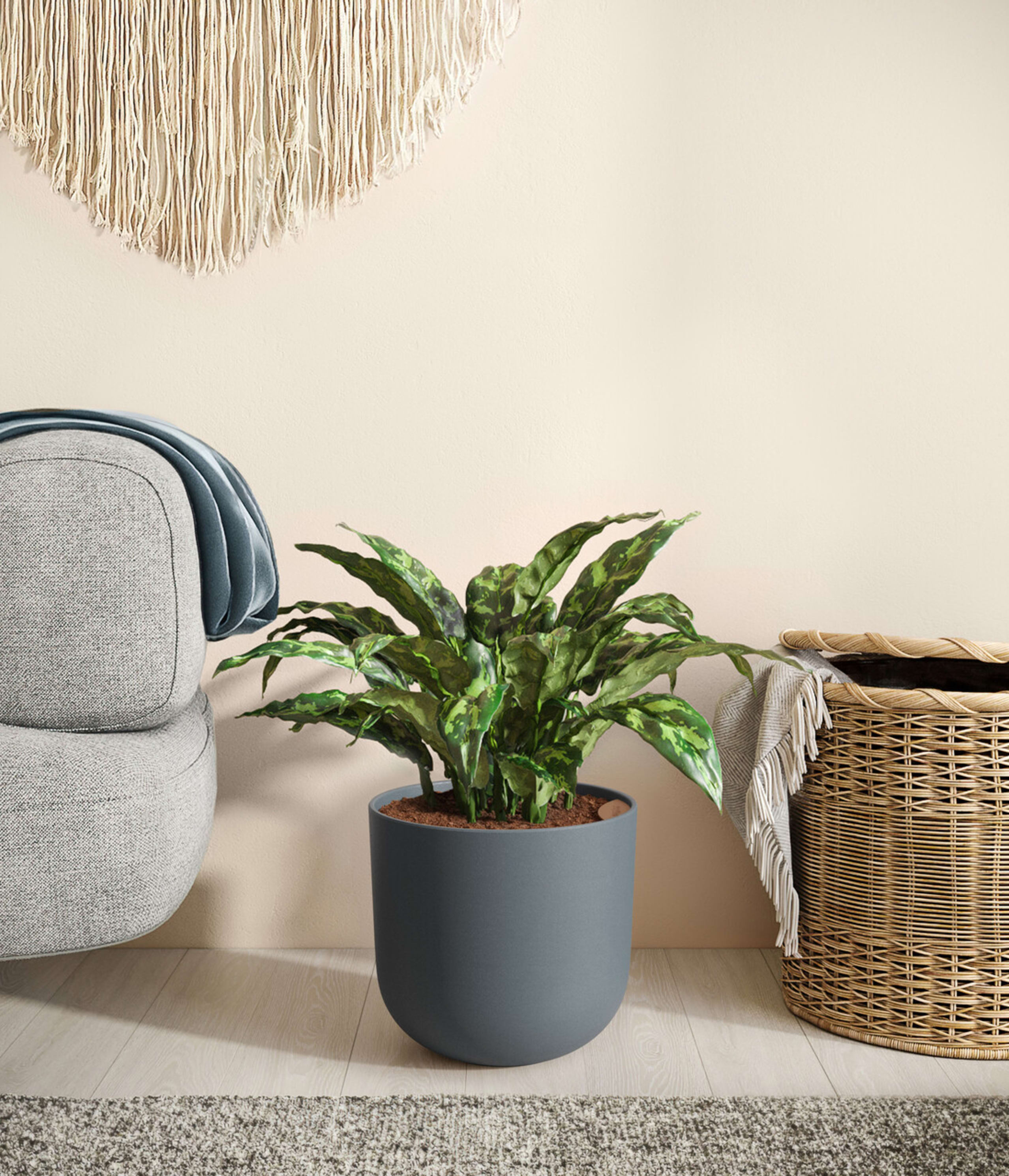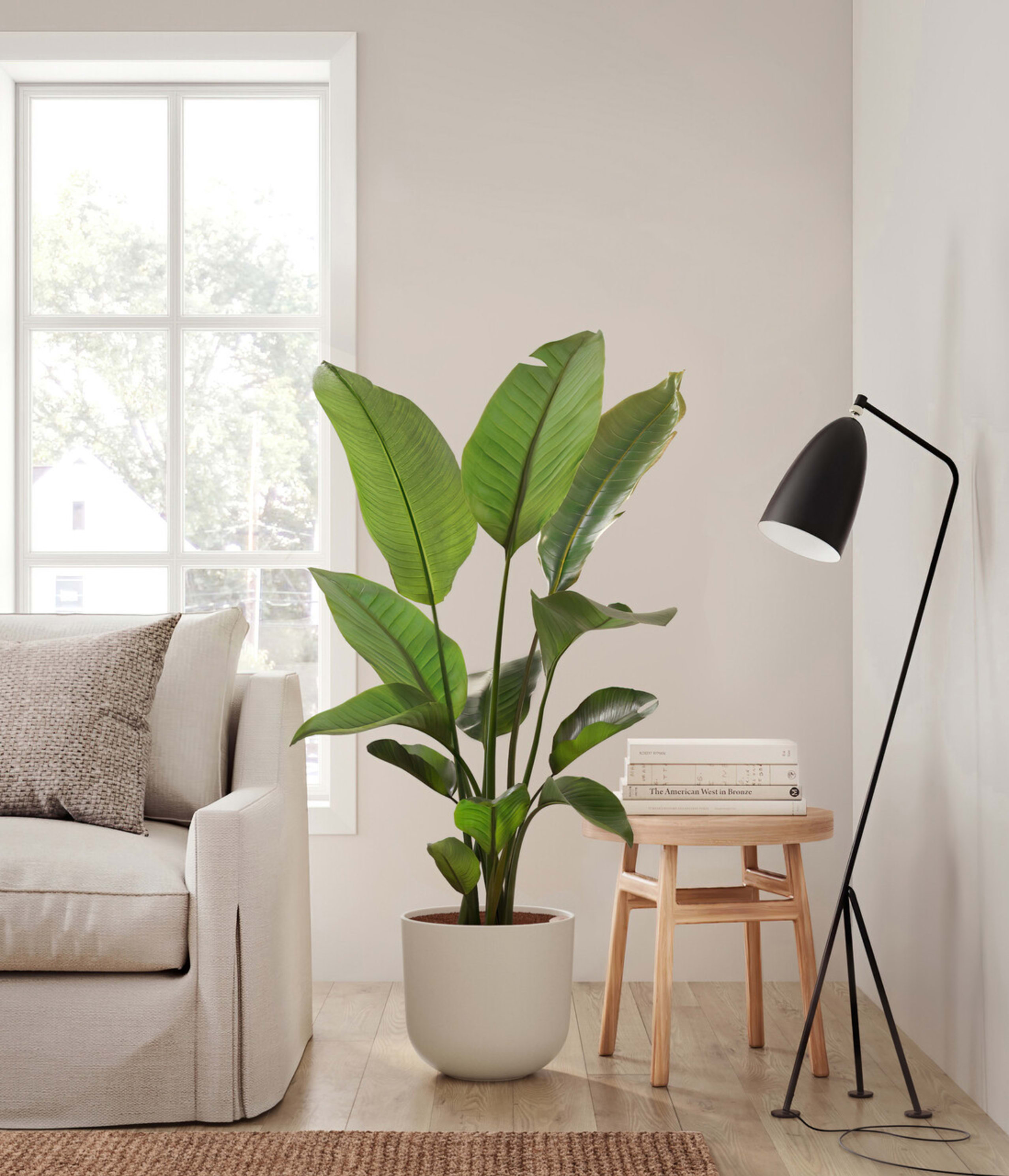About Begonia Maculata
The Begonia Maculata is an evergreen perennial from the tropical South American country Brazil. Its knotted, bamboo-like stems hold a shower of unique foliage. Discovered in 1829 by an Italian taxonomist, it was dubbed with the Latin word "macula," meaning mottled or spotted. This plant is easy to care for but requires specific conditions to thrive.
Other common names
- Polka dot begonia
- Spotted Begonia
- Trout Begonia
How Often Should I Water My Begonia Maculata
With easyplant, watering your Begonia Maculata is simple. Make sure to check the easyplant reservoir once a month and fill it when empty, and you're all set!
If you don't have an easyplant to make watering hassle-free, manually water your Begonia Maculata when the top half-inch of soil is dry. These plants like to remain moist, so don't allow the drying out to go beyond the first half an inch. Allowing the top half-inch to dry gives the plant a break from watering and discourages pests like fungus gnats and fungal infections. Checking the soil will help you determine the cadence in which your Begonia needs watering. The frequency will be higher during its growing season in the spring and summer and less frequent in the winter when plants typically slow growth and conserve energy by going dormant.
Begonia Maculata Light Needs
Begonia Maculata grows best in a space with bright indirect light, where the sun rays are diffused, and can also adapt to spaces with bright direct light, where the sunlight streams inside directly. Avoid placing it in spaces with low light or spaces without natural sunlight.
The Begonia Maculata loves bright, indirect light. This plant likes strong sunlight, but too much direct light can burn or fade the spots on the foliage. The Polka Dot Begonia can tolerate low light, but too little can stunt the plant's growth. The ideal place for this plant to receive the light it needs is by an east or west-facing window all year round or a south-facing window during winter. Be sure to put the plant in the stream of light, but at a safe distance if the sunlight is direct with no filter. You can add a sheer curtain to your window if the light is too intense. For a deeper dive into understanding plant lighting requirements, check out our detailed guide on lighting.
Begonia Maculata Plant Care
The Begonia maculata is as easy to care for as it is easy to love, making it an excellent choice for both plant beginners and experts. When you bring Begonia Maculata home for the first time, it will likely go through an adjustment period. This period could result in leaves yellowing or dropping off, but it's no cause for concern. New, more properly adjusted leaves will soon emerge. To help it grow optimally and evenly, occasionally dust the leaves and rotate the pot by a ¼ turn each month. In addition, Begonia Maculata, like many flowering plants, benefits from 'deadheading'. When the blooms start to fade and die off, feel free to remove them. This practice helps the plant concentrate its energy on creating new blooms and maintaining overall health. Remember, regularly removing spent flowers is a normal part of care for plants that bloom.
How Big Do Begonia Maculata Plants Grow?
The Begonia Maculata is a rapid-growing plant when given the right conditions. Though it is known to be a bit fussy regarding its growing conditions, it can add roughly one foot of growth every season. Given the right environment, this plant will reward you with new leaves almost weekly.
The Begonia Maculata can grow anywhere between 18-24 inches in height and 4 inches wide. Some plants have been known to reach three feet with proper care. The leaves are quite elongated, reaching up to 6 inches long, cascading down like an umbrella.
It takes this plant roughly four years to reach maturity. Once it has reached maturity, it will produce bell-shaped white or red flowers. However, many flowering plants might not bloom when kept indoors. For your Polka Dot Begonia to grow and flourish, it will require learning its preferences with light, watering, temperature, humidity, and more.
Temperature & Humidity
This plant's native habitat is below the equator and it enjoys high humidity and warmer temperatures. The ideal temperature for Begonia Maculata is between 65-86˚F (18-30˚C). It can tolerate warmer temperatures during the day but isn't as hardy during the cold. The ideal humidity level for this plant is over 45%. There are options to raise humidity levels in your home if the environment is drier, especially during the winter. The Polka Dot Begonia thrives in indirect humidity. Ensuring optimal humidity levels can be achieved by using a humidifier (set above 45%), placing a pebble tray with water, or grouping it with other plants. These methods are all effective in providing the necessary humidity for your Begonia maculata.
Is Begonia Maculata Toxic for Pets & Kids?
Some plants add a pleasing aesthetic to the home and can adapt well to the indoor environment but are unsafe to keep in the house. When considering a houseplant, it's important to know if there is anything toxic about the plant that could harm children or animals if touched or ingested.
The Begonia Maculata is moderately toxic to humans and pets if ingested. The most toxic portion of the plant is under the soil, so it's important to keep it away from curious children or pets. Begonias contain soluble calcium oxalates, which have a razor-like texture that can cause damage and pain when ingested.
Symptoms of ingesting the plant are hypersalivation and vomiting in cats and dogs. This plant is just as toxic to cats as dogs and should be kept out of reach. Other symptoms include mouth, throat, and GI tract irritation and upset stomach in humans, but Begonia is not listed as toxic to humans on poison control center lists.
Troubleshooting Common Problems with Begonia Maculata
Part of plant care is observing how your plant is fairing in its environment, so you can make adjustments if needed. Every houseplant will have different signs or tells when they aren't doing well. Here are a few things to look out for with the Begonia Maculata and how to fix the issue.
If you smell an odor from your plant or it has started to wilt at the stems, it could be root rot or a fungal infection due to overwatering. Pull back on the watering cadence and treat the plant with a fungicide. Allow the topsoil to dry out a bit before watering again.
Webbing on the underside of the foliage can indicate the plant has become infested with mealybugs like spider mites. Treat the plant with insecticidal soap or neem oil. Be sure you water at the base of the plant and do not wet the foliage. If you see brown spots on your plant's foliage, it could be bacterial leaf spots due to overwatering or too much humidity. Pull back from watering as frequently and monitor the humidity levels in your home. If you are misting the foliage to create humidity, switch over to a humidifier. Treat the leaves with a fungicide soap.
If the leaves are browning at the tips, it could be due to under-watering or too much direct light. Move your plant to an area with more diffused sunlight, and check the soil. If the top soil is dry, water the plant thoroughly and check it again in a few days to gauge the frequency of watering this plant needs.
Frequently Asked Questions about Begonia Maculata Plant
Is Begonia Maculata Hard to Care For?

Though Begonia Maculata has a fussy reputation, they are not hard to care for, but they do have specific care guidelines that should be followed for the plant to flourish. When it comes to light and watering, in particular, it is a delicate balancing act learned as you become acquainted with the plant's needs. Always monitor your plant for signs of distress and address them right away.
Is the Begonia Maculata Rare?

No, the Begonia Maculata is relatively easy to source and can be found at garden centers and online shops. It is rare to grow compared to other Begonias because of its more temperamental nature. Your local retailer may not carry them, but with enough research, you can easily find one that does.
How Big Do Begonia Maculata Get?

The Begonia Maculata is a fast-growing plant that can add up to 12 inches of growth every season. In total, this plant can reach between 1-2 feet in height and 4 inches wide. Though the Polka Dot Begonia grows fast, there are ways to control its growth through pruning branches and leaves.

 Small Plants
Small Plants Medium Plants
Medium Plants Plants Collections
Plants Collections Large Plants
Large Plants Huge Plants
Huge Plants